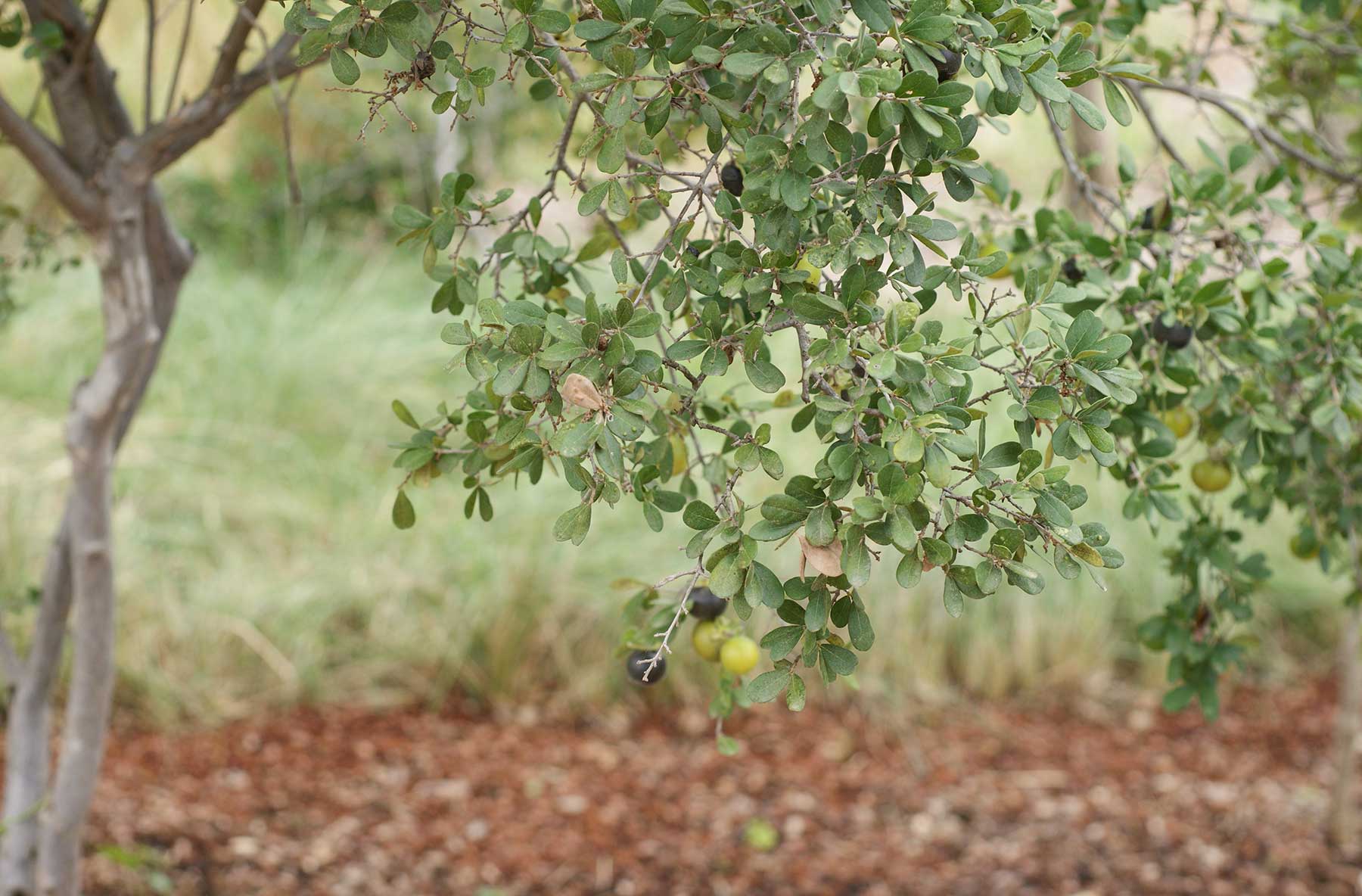
Flora Fact
Food of the Gods
Texas persimmon trees have peeling bark and dark, gooey fruit.
These twisting trees of South and Central Texas may not catch your eye during most seasons unless you are on the lookout for its lovely, peeling bark.
In midsummer, however, look for Diospyros texana’s marble-sized black globes of prune-like fruit. After all, that name comes from the Greek for “food for the gods.”
The fruit of the Texas persimmon is not only for the gods, though, as many types of wildlife enjoy the tree’s bounty, and bees and other insects seek the pollen from its blossoms. Some studies have found that the fruit provides food for many mammals in the fall when other forage is scarce. Animals drop the large seeds (three or more in each fruit) in their scat, fertilized and ready to grow another native tree.
It takes two with Texas persimmons: only the females bear fruit, but a male must be present nearby to fertilize it. It’s a host plant for grey hairstreak and Henry’s elfin caterpillars. Deer and goats browse the leaves, while birds use the tree for nesting.
We humans love the sweetly sticky fruit, though some discard the skins and the fruit’s tough to eat without some seed spitting involved. Cooking makes accessing the tasty flesh easier; use the fruit in your best jam and jelly recipes (four cups juice, three cups sugar and three/four packages of pectin). Highly nutritious, Texas persimmons provide fiber, vitamin B, more vitamin C than citrus fruit, minerals and antioxidants.
Native Americans found many uses for the plentiful Texas persimmon tree and fruit, also known as chapote. Before ripe, the astringent fruit was used for intestinal ailments.
The ripe fruit was used as a dye; the heartwood (only in large trees) is hard like ebony and used to make furniture and tools.
Courtesy Ray Mathews, Lady Bird Johnson Wildflower Center
» Like this story? If you enjoy reading articles like this, subscribe to Texas Parks & Wildlife magazine.

